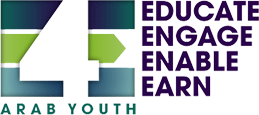

Economic/Labor market overview:
About 250,000 of 18 year olds attend tertiary education with ~65% of them in the ten public universities and ~55% of these students studying courses leading to bachelor degrees resulting in higher unemployment rates than those who stopped after secondary school.
Out of Jordan’s youth population, only 29% participate in the labor market (59% of those in education are excluded), and of these, 27% are unemployed. Female participation rates are extremely low, 15% versus 65% for males.
The public sector represents ~ 30% of all jobs for Jordanians, but has slowed down in the creation of new jobs, whereby private sector in the last two years created ~80% of new jobs.
Less than half of surveyed employers were satisfied with the skill level of new hires:
- University graduates: (26% for hard skills, and 22% for soft skills).
- Vocational institution graduates: (11% for hard skills, and 14% for soft skills)
Pressure will continue to increase as ~260,000 Jordanians exit the productive age and ~1,420,000 Jordanians enter productive age over the next 10 years.
Some insights on sectors of growth:
Tourism and Hospitality:
- About 1,000-5,000 new jobs need to be created in the next 3 years
- Gap exists between both quantity and quality of trained staff
- Negative perception of jobs in this sector especially for women.
ICT:
- The sector has grown about 3%, with upward potential of ~ 3-5%.
- There is a sufficient number of graduates, however major gaps still persist in technical, management, and soft skills
- Training required for job seekers in next 3 years: ~10,000-20,000
- Need for job placement assistance.
Healthcare:
- Shortage of 10,000 in nursing/support staff (mostly filled by expats and males)
- Need for improved advanced technical, managerial and soft skills
- Need for training for job seekers in next 3 years: ~35,000-45,000.
